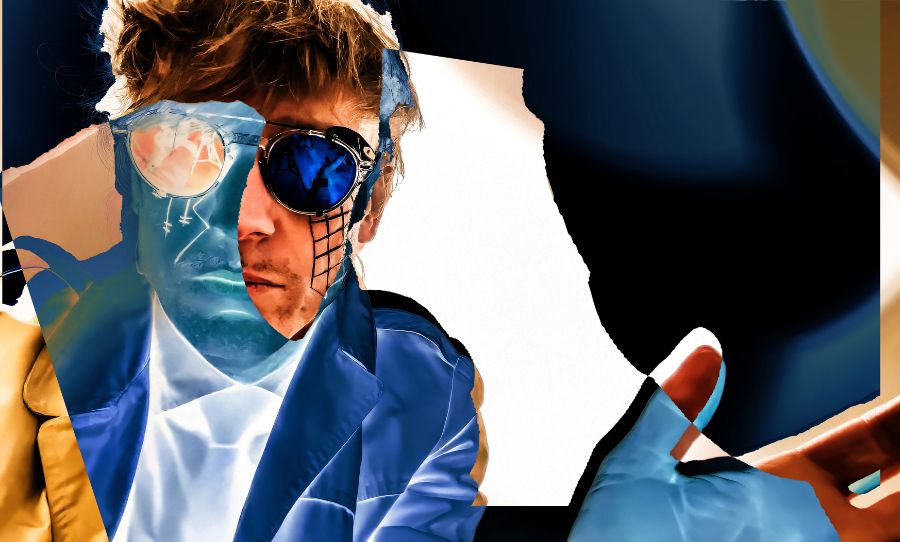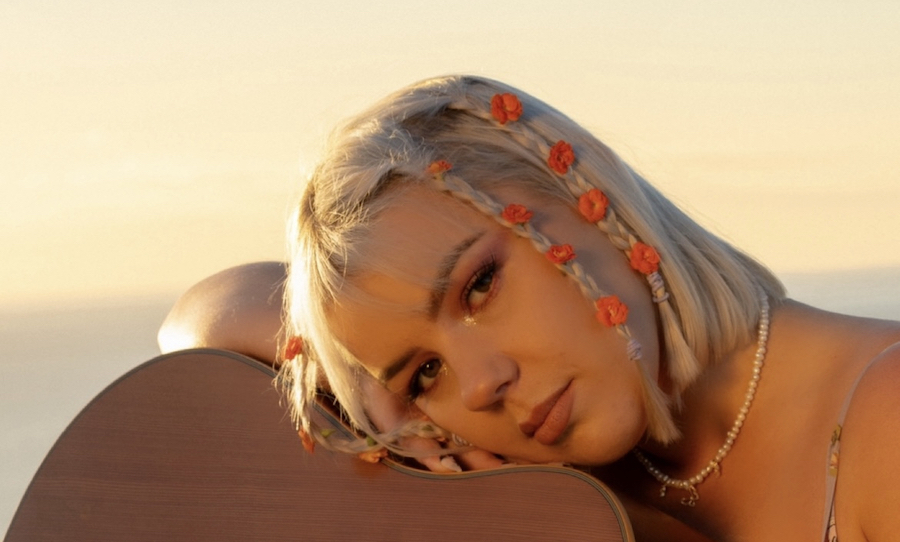Eugene Fox, one of Melbourne’s rising muso’s, shares the icons that have inspired and empowered his journey through neurodivergency
Eugene Fox, whose latest single ‘Miss the Goalie’ is a moody folk-pop sensation, is very open in his discussions around his autism and ADHD diagnoses.
Embracing his unique and creative mind and allowing it to fuel his music, Fox is an empowering figure for younger neurodivergent creatives making their way through the world.

In the spirit of celebrating neurodivergent inspirations, Fox shared with Happy the three figures that have influenced him the most; whose neurodivergency didn’t affect them and the incredible things they did.
From Robbie Williams to Brett Whiteley to Hilma af Klint, Fox takes us through his own view of their work and process, and how their music and art has inspired him throughout his musical career.
Robbie Williams (1974 – )
Or St. Robert as I like to call him. Patron Saint of Neurodivergence. Robbie is very open about his diagnoses – ADHD, Dyspraxia, Dyslexia, ADHD, neurodiversity, body dysmorphia, hypervigilance, PTSD.
Dyspraxia is interesting, very much connected to autism and certainly not connected with athleticism. Yet St Robert sings and dances at the same time; and he’s not a golfer but he’s a natural and can beat a club pro.
He’s collecting disorders like scout badges he reckons. I daresay we share a few. Disorders that is, not scout badges. I couldn’t get one of those if I tried! St. Robert is a shining beacon for the disabled community, not even his millions can insulate him from the struggles of his mind.
If you haven’t seen his documentary on Netflix yet, it’s a must watch for all artists. And his Instagram account is a celebration of neurodivergent honesty and vulnerability.
Brett Whiteley (1939-1992)
Brett Whiteley was a genius and precocious talent, and while not formally diagnosed neurodivergent to my knowledge, discovering him has been a revelation to me.
At once, I saw astonishing similarity in his speed of unique expression to my own. Hyperactive. Can’t sit still. Must bounce angles off walls. Then turn shapes into balls. And rearrange the room while the mind won’t wait. When in convention’s restraint go inside and create!
Whiteley was a writer just as I am a painter. I recognised his process and practice instantly. And it’s just one of those things that I had to start looking at visual artists to find where I fit most. But it’s all music isn’t it?
I drip feed exposure to Brett Whiteley through old footage when I am most in need of a lift and always feel better because I just see how different we are. Then I can move onto the next thing with renewed optimism that being myself is the only option, and I know where not being an autistic artist leads. “The other thing,” Whiteley called it. I’ve got more to do before that.
Hilma af Klint (1862 – 1944)
Ah, Hilma. She was vital in the resurrection of my spirituality. And if someone actually reads this, spirituality is not about bringing back the dead. I could tell you how I did that but there was nothing spiritual about it.
And I’m glad to be exploring that spirituality more and finding it’s really more meditative and accepting of reality than any devil worship or seance. In my life and career as an artist in the years since my diagnosis, I see af Klint’s shapes everywhere, like a guiding light and warm reassurance that I’m in the right place.
A Swedish artist and mystic, apparently she was considered to be one of the first abstract artists in history. But I am not an Arts student. I’m an uneducated bogan without a pot to piss in. And yet af Klint is an absolute inspiration.
She shows such precision and restraint in her concepts and offers so much to reflect on. Life, creation, love, idealism, the universe. From a personal perspective, I see My Songs, My Children, in her work.
Lovingly nurtured from conception to completion where they take on a life entirely their own and separate to the artist. I have such admiration for how she expressed her individuality and the remarkable quality of the work despite her vulnerability and poor treatment.
She was discouraged from showing her work by people she trusted, and undermined for her spirituality as well as her gender. No formal diagnosis for Hilma here either from what I’ve read, but her devotion to her art and practice of mediumship is something I relate to deeply.


